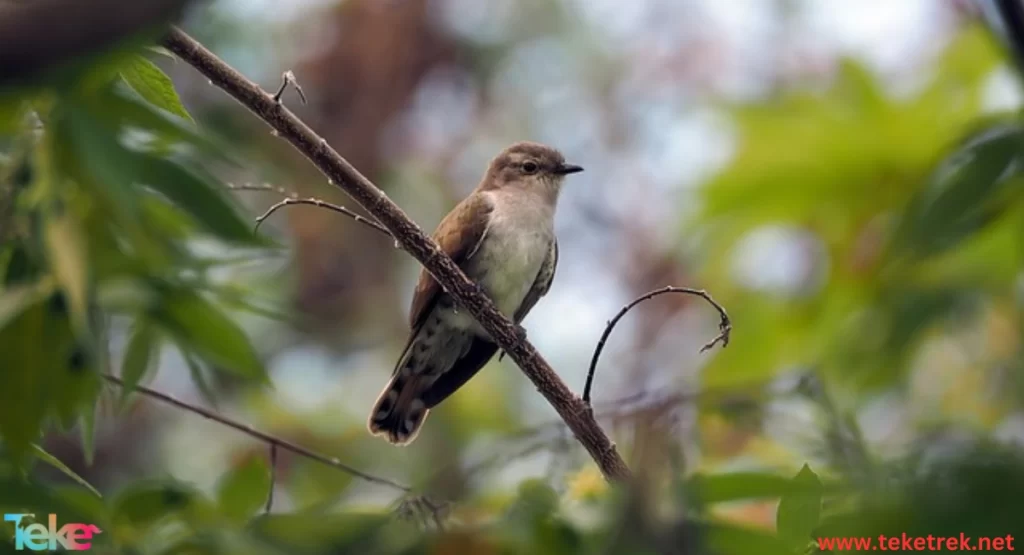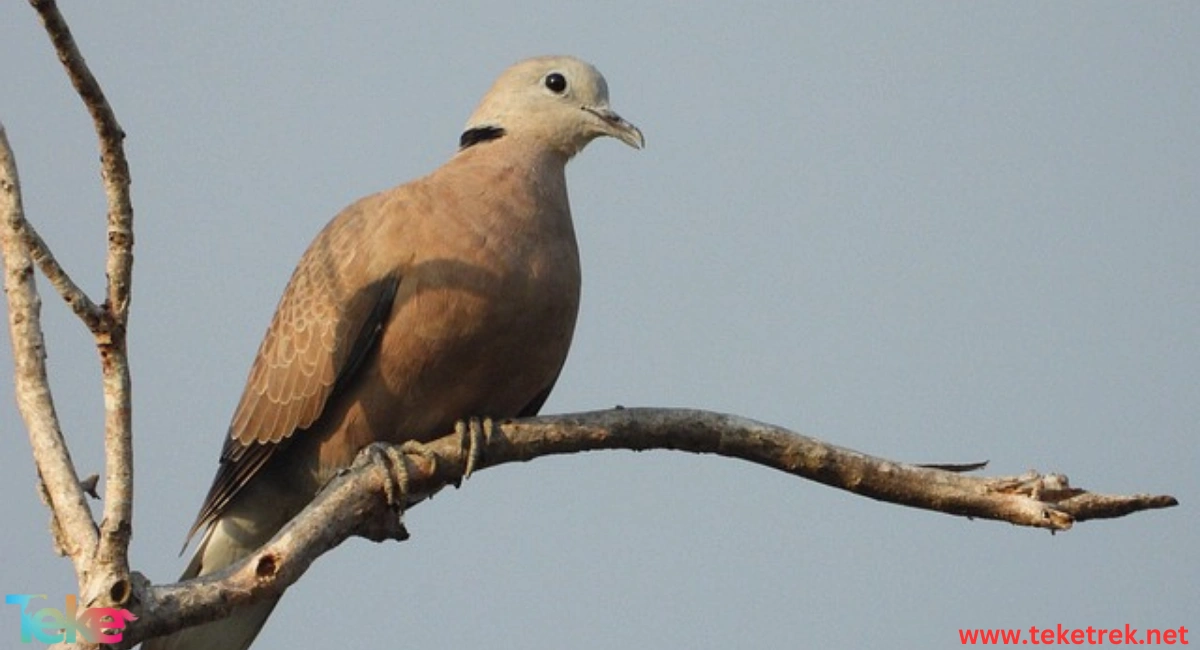The Cuckoo bird is about the size of a dove and belongs to the Cuculidae family. These birds are extremely shy and tend to prefer hiding in dense trees.
The Cuckoo bird is considered intelligent and cunning, using its cunning in a remarkable and unbelievable way. It lays its eggs in the nests of other birds without bothering to build its own nest, taking advantage of the other birds.

Specifications of the Cuckoo Bird
The scientific name of the Cuckoo bird is Cuculus canorus, and it is also known by several other names, most notably the parasitic weaver or the cuckoo.
- Length and Weight
The length of the Cuckoo bird ranges from 16 to 90 cm, and its weight ranges from 110 to 130 grams, with a wingspan of about 58 cm.
- color
Some tropical birds have highly glossy blue feathers on their backs and wings, with colors ranging between gray and brown. A few of them have patches of red or white.
- wings
It has pointed wings, a gray-colored head, and a shiny yellowish ring around its eyes.
- Tail
Cuckoo birds have long tails that are graded in color.
- Legs and Feet
The length of the legs varies depending on the type of Cuckoo bird, ranging from medium to long. The outer toe of this bird points backward unlike the rest of the toes.
- Beak
Cuckoo birds also have a long, sharp, and curved beak.
Habitats of the Cuckoo Bird
- The Cuckoo bird lives all over the world, found in Europe, Asia, Africa, and the Sahara Desert, but absent from the polar continent.
- It also inhabits marshes, meadows, and fields, but can also be found in densely vegetated areas and mountainous regions.
- It also lives in Armenia, Andorra, Austria, Azerbaijan, Thailand, France, Russia, Switzerland, and many other places.
Types of Cuckoo Birds
1. Eurasian Cuckoo:
This type is spread across Europe and Asia and migrates to another place during breeding season.
2. Soft-furred Cuckoo:
This bird is known for building its nest alone, relying on itself rather than other birds like other species.
3. Yellow-billed Cuckoo:
This type is found in northern Mexico and feeds on insects and butterflies, characterized by its beautiful yellow color.
What does the cuckoo eat ?
- Hoopoe birds primarily feed on insects and larvae, which are their favorite food. They search for food in trees and bushes.
- They also consume various invertebrates, as they are considered carnivorous. Additionally, they feed on spiders, worms, and other small animals such as small frogs and small amphibians.
Reproduction in Cuckoo Birds
- As we discussed earlier, Cuckoo birds lay their eggs in the nests of other birds, and the incubation period lasts for 12 days until hatching, after which other birds take over the responsibility of nurturing and caring for the chicks.
- Cuckoo birds lay between 10 to 25 eggs in one breeding season.
- Therefore, Cuckoo birds have no role in raising their offspring, and the chicks become independent after 8 weeks.
Facts about the Cuckoo Bird
- The Cuckoo bird is considered a parasitic animal as it destroys the nests of other birds, and it is lazy, relying on other birds to fulfill all its responsibilities.
- This ungrateful bird gets rid of its partners in the nest, whether chicks or eggs, selfishly expelling them from the shelter.
- It steals the eggs or chicks of the victim bird and removes them from the nest. When the victim bird returns to its nest, it doesn’t notice the difference and continues to care for these eggs or chicks as if they were its own.
- A Cuckoo bird can live up to 30 years in the wild if it enjoys a healthy environment free from threats.
- The shell of a Cuckoo bird’s egg is thick and does not break when it falls from the nest.
- The chicks of the host bird are disposed of by pecking them at the point of death.
- The feathers of the Cuckoo bird are very soft, which may cause some trouble for the bird when it rains.
- The Cuckoo bird prefers to be solitary; this unsocial bird is not observed in pairs and does not fly in groups.
- Cuckoo bird chicks make sounds to attract other birds, not just the host birds, to bring food to them.


FAQ
- Why is the cuckoo bird malicious?
The cuckoo is a malicious bird that does not care about raising its young. It places its eggs in another bird’s nest, and once the egg hatches and the cuckoo chick emerges, it throws the host’s eggs from the nest. How many cuckoos are around us.
- Are cuckoo birds smart?
The titular species of this book, the Common Cuckoo, is one of the cleverest birds around and one of the most fascinating to read about
- Can a cuckoo fly?
The cuckoo has a distinctive low flight, flying with very fast beats.
In short, the cuckoo is a cunning, ungrateful bird that betrays other birds.






